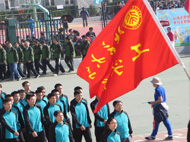主 办:力学系与湍流重点实验室
报告人:Prof. Sergei Chernyshenko, Imperial College London
时 间:9月27日 周四 上午10:00
地 点:北京大学澳门十大赌厅网1号楼210室
Abstract:
Advances in computing technology have enabled the calculation of complex and chaotic solutions to nonlinear dynamical systems, including in some cases turbulent solutions to the fundamental equations of fluid mechanics. However, numerical simulations have two inherent drawbacks. The first is that one is often interested only in a few quantities, such as the lift and drag of an aircraft, but computing them typically requires very high-fidelity simulations, whose computational cost can be prohibitive. The famous problem of turbulence consists in discovering rigorous and computationally efficient methods to calculate only the quantities of interest, without having to compute also the fine details of the flow. The second drawback is that, even when a mathematical model is known to precisely represent a physical system, the approximation error of numerical solutions cannot be calculated exactly. In safety- or performance-critical applications, overcoming the uncertainty in numerical errors necessitates calculations with higher precision than essential, or even possible.
In the last few years a rigorous general approach addressing these drawbacks has been proposed. If X is the quantity of interest, the approach gives lower and upper bounds (A and B, respectively) such that X is mathematically guaranteed to lie between A and B. This bounding framework combines a generalisation of the century-long idea of a Lyapunov function with advances in computational semi-algebraic geometry made at the start of the millennium, and it is related both to the well-known nonlinear energy stability theory and to the "background method" for bounding time averages. The crucial observation is that the bounds A and B can be computed numerically without simulating the underlying system, thus promising a reduction in computational complexity compared to current practice. At the expense of additional computational cost, bounds can also be tightened systematically as much as needed to guarantee that any safety or performance specifications are met.
The talk will give an overview of the theory behind this new approach and show specific examples of its application.
Short-biography:
Prof. Sergei Chernyshenko graduated from the Department of Mechanics and Mathematics of the Moscow State University in 1977 and got his PhD (1983) and DSc (1995, DF-MN, which is a Russian professorial-level degree) from the same university. After 20 years (1980-2000) at the Institute of Mechanics of the Moscow State University, Prof. Chernyshenko moved to the University of Southampton, UK. Since 2007 he holds a chair at the Department of Aeronautics of Imperial College London. Prof Chernyshenko conducts research in theoretical fluid dynamics, with strong emphasis on mathematics, and a wide scope, ranging from classical theoretical problems such as the high-Reynolds-number asymptotics of the steady solution of the Navier-Stokes equations for the flow past a bluff body to applied works such as the proposal of a practical method of turbulent drag reduction.
欢迎广大师生光临!









